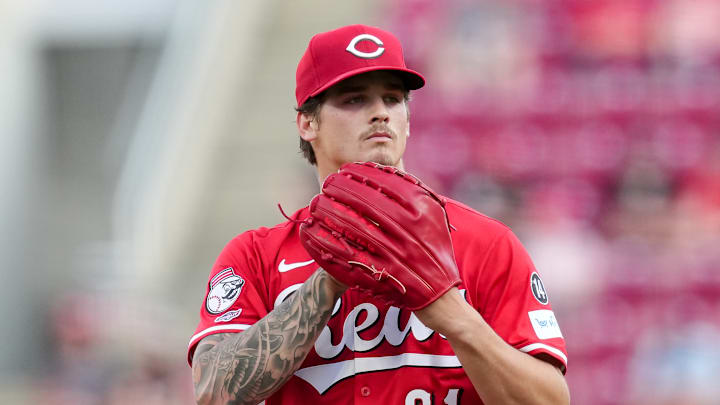When Chase Petty took the mound on April 30 for his long-awaited major league debut with the Cincinnati Reds, there was plenty of excitement. The 22-year-old right-hander, a former first-round pick in the 2021 MLB Draft, had climbed through the system with a high-octane fastball and a strong slider. But the lights were a little too bright and they proved to be unforgiving.
Petty lasted just 2⅓ innings against the St. Louis Cardinals, surrendering nine earned runs, two walks, three strikeouts, and two home runs. It was a brutal introduction to the big leagues and a harsh reminder of the gap between potential and being MLB-ready.
In a move that shocked no one the Reds optioned him back to Triple-A Louisville after the game — a decision met with little resistance from anyone who witnessed his outing.
Chase Petty’s debut wasn’t pretty — however it says a lot more about the Reds than it does about him
But make no mistake, this was never supposed to be the moment for Petty. At least, not yet. Petty hadn’t exactly been on some big tear through Triple-A, receiving the call-up with an 0-2 record, a 3.52 ERA, and 27 strikeouts in 23 innings. The promise is there — he possesses a dynamic fastball-slider combo and flashes command that suggests he’ll be a mainstay in a big-league rotation one day. But the secondary pitches are still in development, and when his command wavers, the rawness shows.
Petty’s hasty promotion says more about the state of the Reds’ pitching depth than it does about his readiness. With Carson Spiers hitting the injured list alongside other key arms, they’re simply running out of options.
"His career is not going to be defined by tonight."
— Joe Danneman (@FOX19Joe) May 1, 2025
"Kind of hard to enjoy it to the full of it, but happy to get it out of the way and only up from here. I know I'm better than how I performed."
Terry Francona and Chase Petty talk about Petty's big league debut. pic.twitter.com/rQouTS0vXN
Veteran lefty Wade Miley, signed in the offseason to provide stability and experience, suffered a lower-body injury setback on April 27 during his second rehab outing. It’s unrelated to the elbow surgery that ended his 2024 season, but it’s another roadblock for him.
Then there’s Rhett Lowder — another highly touted pitching prospect — who remains sidelined with a forearm strain. He hasn’t thrown in a game yet this year and is still ramping up via bullpen sessions.
With options dwindling, the Reds turned to Petty not because he was dominant, but because he was next in line. So yes, his debut was forgettable — but it shouldn’t be viewed as a failure. For a young pitcher like Petty, this was a mission to gather some data. A tough night, but one that adds to his development. If anything, it should serve as fuel. A blueprint of what still needs refinement.
Petty will be back. And the next time the Reds call his number, the expectation is that the outcome will be different.
